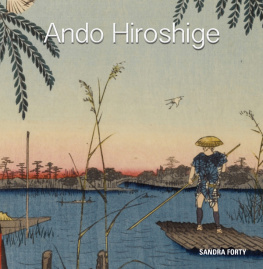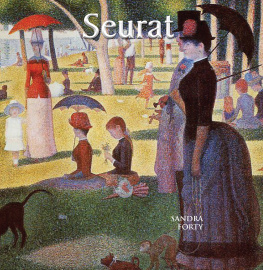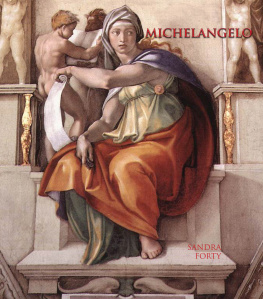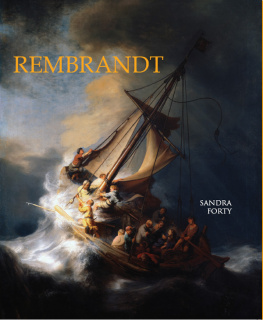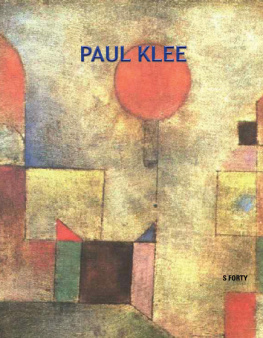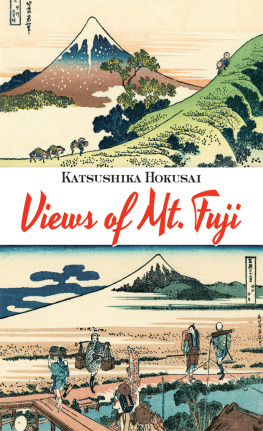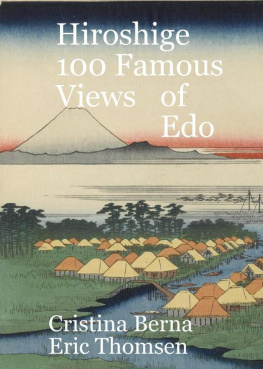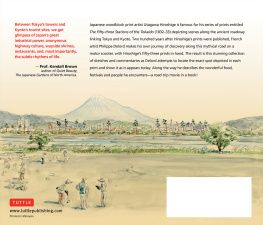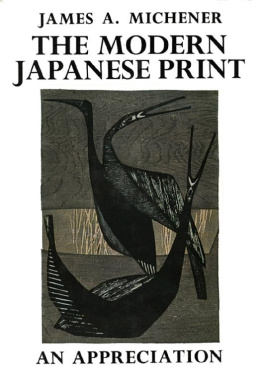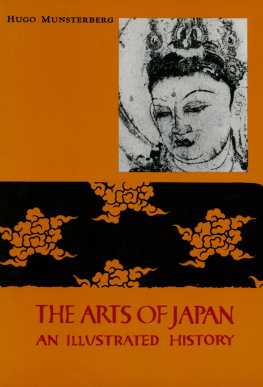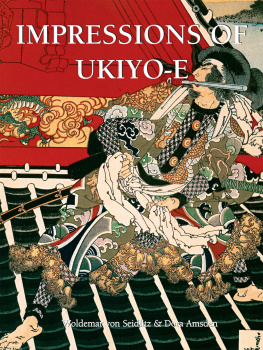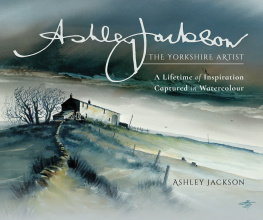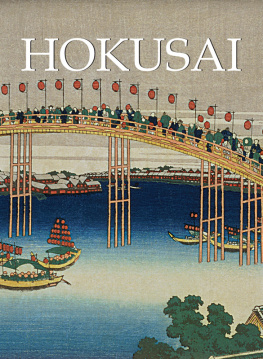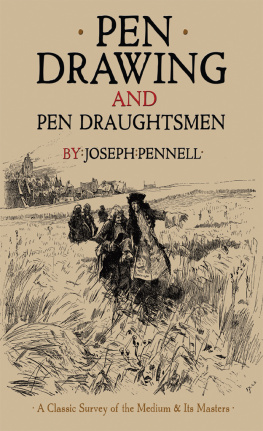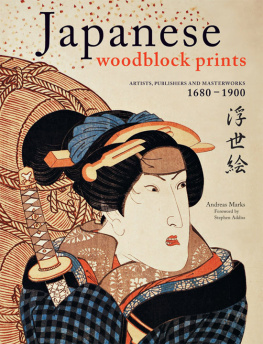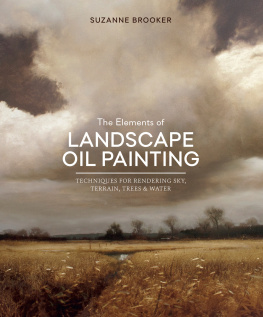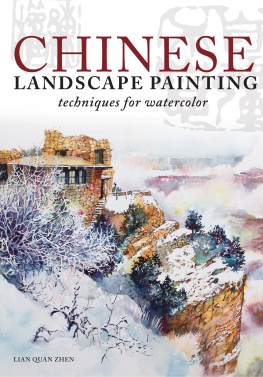Published by TAJ Books International LLC 2013 219 Great Lake Drive Cary, North Carolina, USA 27519
www.tajbooks.com
www.tajminibooks.com
Copyright 2013 TAJ Books International LLC
All rights reserved. No part of this publication may be reproduced, stored in a retrieval system, or transmitted in any form or by any means, electronic, mechanical, photocopying, recording, or otherwise, without the prior written permission of the Publisher and copyright holders.
All notations of errors or omissions (author inquiries, permissions) concerning the content of this book should be addressed to .
ISBN 978-1-84406-298-0
Printed in China
1 2 3 4 5 17 16 15 14 13
1797-1858
A ndo Hiroshige is considered by many as the last of the great creative masters of the traditional Japanese woodblock print. His skill has won him worldwide fame and artistic influence, along with his contemporary, Katsushika Hokusai. Both of them widened the range of subjects they covered to encompass every aspect of life in Japans Edo period.
Although famous primarily for his landscapes and the studies of his home city Edo, Hiroshige produced many others kinds of ukiyo-e (pictures of the floating world), everyday images of Japan. He was a mood and nature painter, who loved to portray and capture the changing seasons and weather. A poet of snow, rain, and wind, and a great lover of moonlight, dawn, and dusk, Hiroshige dominated landscape printmaking with his unique and intimate small-scale prints as opposed to the older traditions of landscape painting.
Although he knew that he wanted to be an artist at an early age, Hiroshige went through the necessary lengthy period of development before he emerged as a masterit was over 20 years after he began working that his reputation became established. As with other Japanese ukiyo-e artists he changed his name several times, using Ando Tokutaro, Juemon, Ichiryusai, Ryusai, Utagawa Hiroshige, Ando Hiroshige, Utashige, and Tokubei. These name changes reflected the changes he was experiencing in both his personal and working lives.
Hiroshige lived during the golden age of the Tokugawa Shogunate, before Japan was opened to the outside world. During the Shogunate, however, change was nevertheless occurring in the feudal military society. The Shogunates success had ensured peace, increased wealth and literacy, and created a prosperous middle class centered in Edo, the eastern capital of the de facto ruler of Japan, the Shogun.
With income to spend but having neither land nor power, the Shogun created a fantasy world of beauty and pleasure, which came to be known as the Floating World, centered in Yoshiwara, Edos licensed red-light district. Filled with teahouses, brothels, and Kabuki theaters, lifes fleeting pleasures and poignancy as well as the beauty of nature were celebrated, along with more earthly desires.
The development of ukiyo-e woodblock prints was one aspect of this culture, depicting geisha, baijin (beautiful women), courtesans, famous Kabuki actors, and sumo wrestlers in addition to myths, ghost stories, tales of legendary samurai, and of course, landscapes, many of which were developed by Hiroshige into some of the masterpieces of the medium. With peace, stability, rising prosperity, and the technological advances that made mass-produced woodblock prints cheap and available, ukiyo-e became extraordinarily accessible and popular. Although no complete catalog of Hiroshiges work exists, it is estimated that the total number of individual pieces exceeds 8,000, of which some 5,500 pieces are color prints. Hiroshiges prints appeared at the rate of two a week for a period of 45 years, showing just what a prolic and hardworking artist he was.

Memorial portrait of Hiroshige by Kunisada
ORIGINS, 17971811
The artist we know now as Ando Hiroshige was born Ando Tokutaro in Edo in 1797 at the Yayosu Barracks to the east of the Shoguns castle. It is said that his father was the third son of Tokuyemon Tanaka, a teacher of archery in Edo and a samurai of the Tsugaru clan, but that he had been adopted into the family of Ando, taking the new name Ando Genyemon. (A few of Hiroshiges prints do bear the old family name of Tanaka in seal form.)
Ando Genyemon was a warden of the Edo Castle fire brigade, an official but relatively minor hereditary position. The fire wardens income was small, there were not many fires and lots of time to pass. It was often the case that the firefighters had to find other ways to augment their living. Although he was a low-ranking samurai and his income was relatively small, Ando must have raised his son by the samurai code of ethics and lived with a certain dignity, because Hiroshige became a cultured man with literary knowledge and tastes. It seems that from a very early age Hiroshige was passionate about drawing and had determined to have a career as an artist. He was obviously an autodidact, or self-taught person, with an insatiable thirst for art and acquiring the techniques to realize his own creations more fully. His parents seem to have accepted his passion. They arranged for him to have lessons from an amateur painter named Okajima Rinsai, who was a friend, neighbor, and a follower of the Chinese-influenced Kano school.
Then in 1809 disaster suddenly struck when, at the age of 13. Hiroshige lost both his parents (perhaps to cholera, certainly some kind of epidemic). He then inherited his fathers position. He would maintain this position and rank for another 13 years, even after joining Utagawa Toyohiros studio. In 1823, he eventually passed the post to his brother, Tetsuzo, who in turn passed it on to Hiroshiges son, Nakajiro, in 1832. By this time, Hiroshige seems to have started using the name Ando Juemon.
UTAGAWA HIROSHIGE, 18121831
The relative ease of his firefighting job certainly enabled Hiroshige to concentrate on his first love of art. He must have had a precocious talent, for only a year or two later he attempted to join the studio of the most famous master of Kabuki actor portraits at the time, Utagawa Toyokuni. He was turned down, but obviously had made some kind of positive impression. His determination was unwavering and he tried again some time later.
Toyokuni already had more students than he could manage and recommended Hiroshige to his friend, Utagawa Toyohiro, another prominent ukiyo-e artist of the day. Toyohiro had taken his name from the Utagawa school, a group founded by Utagawa Toyoharu, whose pupils Toyokuni took over after the masters death, making the group the most powerful and famous of that time. Other Utagawa artists include Kunisada, Kuniyoshi, and Yoshitoshi.
Toyohiros style suited Hiroshige better than Toyokunis because they had similar temperaments. Toyohiro gave the young Hiroshige space and time to develop. It is testament to both Hiroshiges talent and effort that he progressed so rapidly; within the short space of a year his master formally acknowledged him with his own artist name, Ichiyusai. Hiroshige used this name as well as the Utagawa school name, later changing it to Rysai or alternatively Ichiryusai. He published Famous Places in the Eastern Capital under this last name in March 1812.
Hiroshige adopted the name Hiroshige in the following year, 1813. The name is a combination of Hiropart of Toyohiroand Shige, the first part of his own name, Juemon, which can also be read as shige. A period of stability followed in which Hiroshige held his firefighting overseer job (he was commended for his bravery while fighting a fire in Ogawa-nichi district in 1818), continued his personal investigations of the Kano and Shijo schools of painting and served his apprenticeship with Utagawa Toyohiro.

